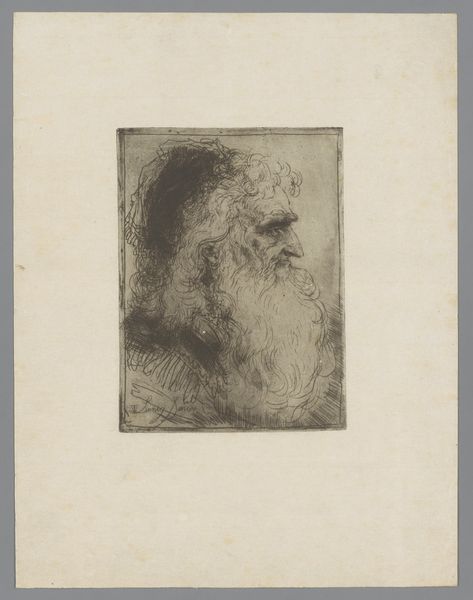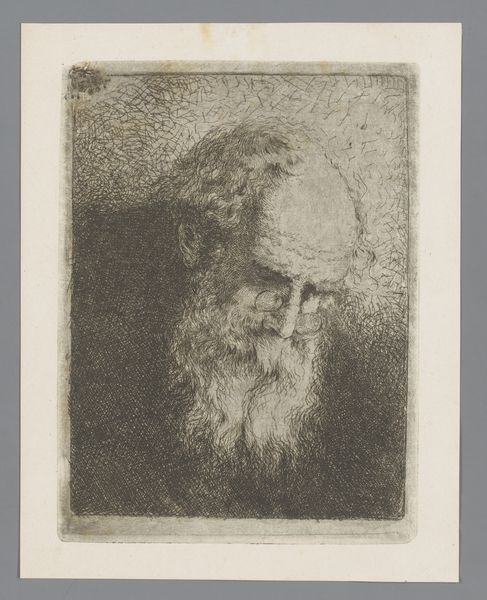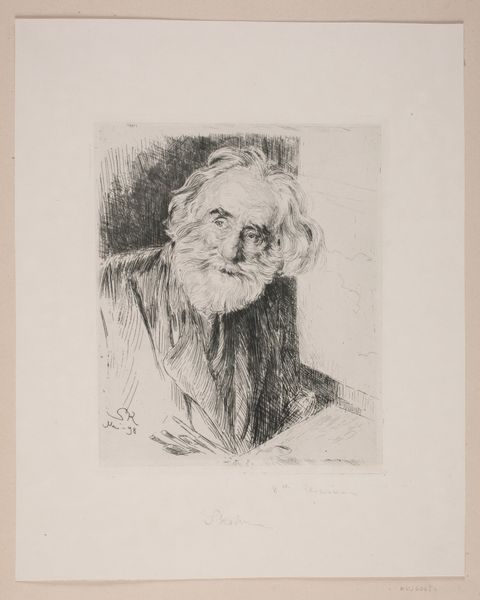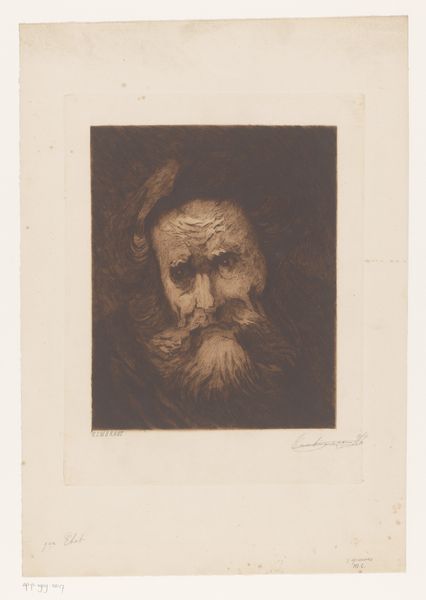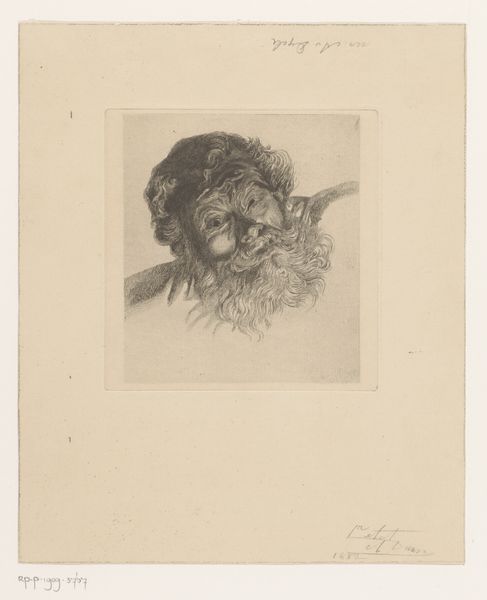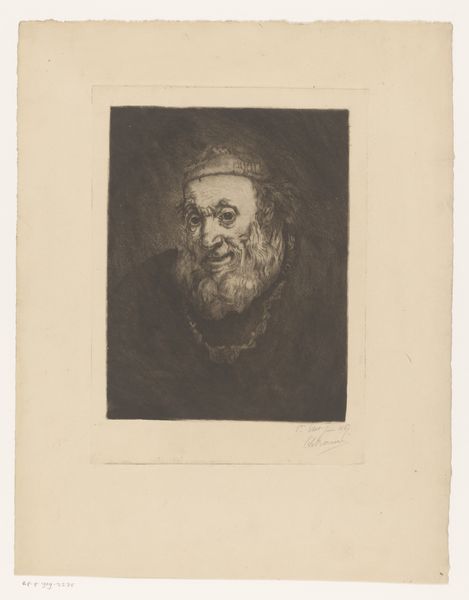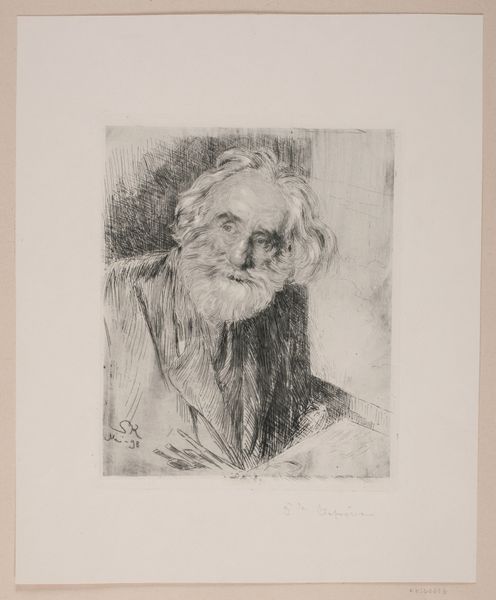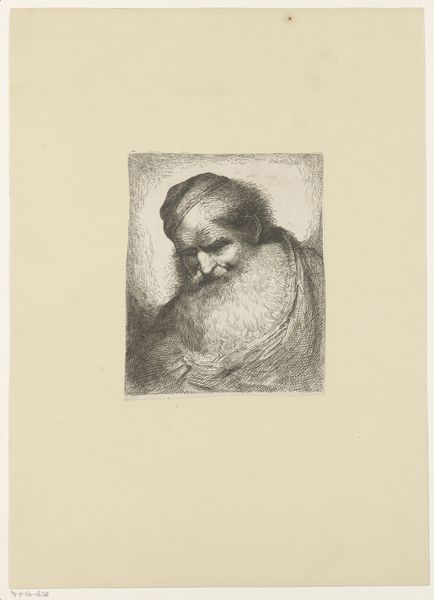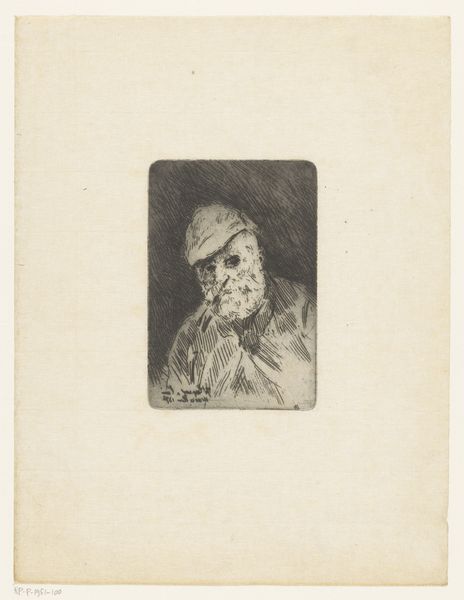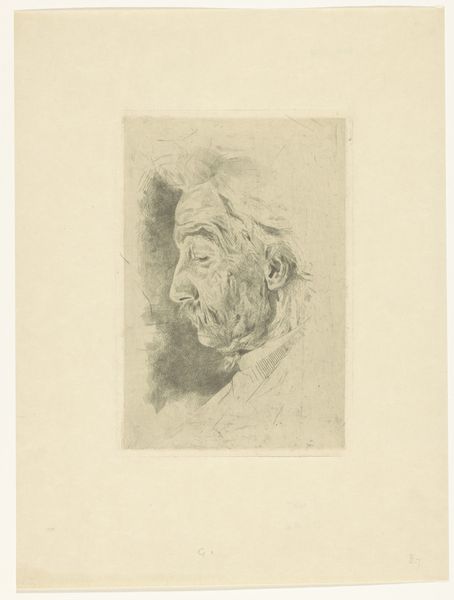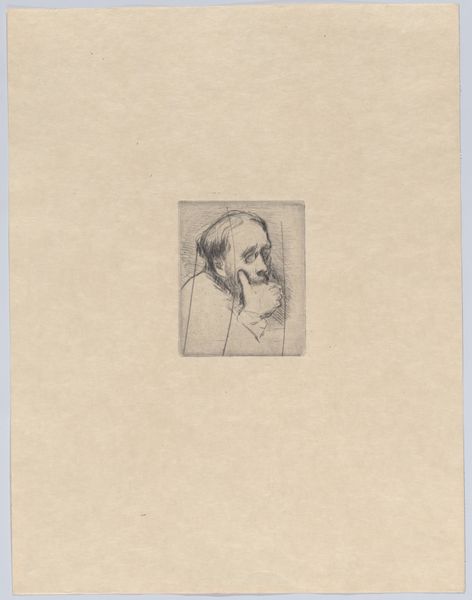
drawing, print, paper, pencil, engraving
#
portrait
#
drawing
# print
#
paper
#
pencil
#
line
#
engraving
#
realism
Dimensions: height 150 mm, width 110 mm
Copyright: Rijks Museum: Open Domain
This is a print of an old man with a long beard, made by Willem Linnig the Younger sometime in the late 19th century. It is a great example of the etching process. The process involves covering a metal plate with a waxy, acid-resistant layer. The artist then scratches an image into that layer, exposing the metal underneath. The plate is then submerged in acid, which bites into the exposed metal, creating recessed lines. Ink is applied to the plate, filling these lines, and the surface is wiped clean. Finally, paper is pressed onto the plate, transferring the ink and creating the print. Here, the etched lines give the image a distinct texture, particularly visible in the man’s beard and hair. This technique allows for fine detail and subtle tonal variations, giving the portrait a sense of depth and character. The quality of line speaks to Linnig’s skill as a draughtsman. Looking at the image, we get a sense of the labor and skill involved in traditional printmaking. In this way, it prompts us to consider how materials, making, and context are essential for understanding the full meaning of the work.
Comments
No comments
Be the first to comment and join the conversation on the ultimate creative platform.
